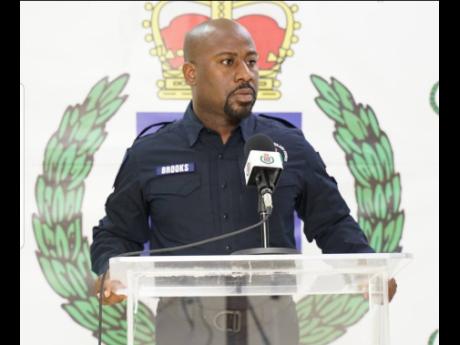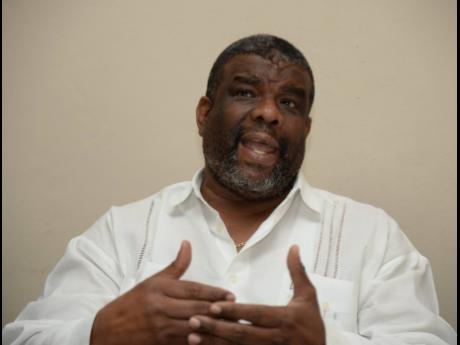Lockdown murders
Criminals still carrying out deadly attacks on no-movement days
Four people were killed and seven others wounded by gunfire over the first three-day lockdown imposed by the Government last month to arrest a deadly third wave of the severe acute respiratory syndrome coronavirus 2 (SARS-CoV-2).
Amid spiralling COVID-19 deaths and a public health system teetering on the brink of collapse, there were three murders and three shooting incidents on August 22, the first of the three lockdown days, according to the latest police statistics.
The other killing occurred on August 24, while two shootings were recorded on each of the last two no-movement days, which were announced by Prime Minister Andrew Holness on August 19.
The second lockdown period, August 29 to 31, was not included in the Jamaica Constabulary Force (JCF) statistics.
“This COVID thing wicked…right now a bullet might be better than this [expletive redacted],” one former gangster railed against the respiratory virus, which has caused 1,585 deaths and afflicted 69,789 people locally up to last Thursday.
“But me cyaa mek dem tek me out [get killed] because me baby [child] we suffer,” he said, alluding to possible reprisal attacks, which police investigators believe are behind a significant number of murders.
There were 103 murders and 101 shooting incidents that resulted in injuries between August 1 and 28 this year, both marginally higher when compared with the corresponding period last year, according to the police statistics.
It’s an indication that the spin-off effects the tighter COVID-19 containment measures were expected to have on the country’s murder rate have not materialised, stakeholders have argued, citing the longer curfew hours that have been in place since August 11 as an example.
GANG-RELATED
According to the police, the factors driving the latest serious-crime statistics are largely gang-related as well as interpersonal conflicts.
“If someone has the motivation to harm their neighbour, a no-movement order is not going to deter them, especially when they live a yard or two away from the person they are in conflict with,” JCF senior communications strategist Dennis Brooks told The Gleaner.
The police indicated, too, that globally, lockdowns and curfews have not resulted in a reduction in violence and “Jamaica isn’t much different in that regard”.
Jamaica recorded 935 murders and 815 shootings between January 1 and August 28 this year, increases of 9.7 and 2.4 per cent, respectively, over the comparative period last year, the JCF data shows.
Police personnel contracting COVID-19, the “considerable policing effort” to get Jamaicans to comply with the containment measures and the increased demand for traffic management on lockdown days are just some of issues that have placed added pressure on the JCF to “control and bring down crime”.
“We are human and we are at the tip of the spear in Jamaica’s fight against the pandemic. We have several persons who are in quarantine for precautionary purposes and then others who have tested positive,” said Brooks.
PRIORITY TO GUNSHOT VICTIMS
But the continued bloodletting is already causing a “significant” impact on the country’s fragile healthcare system and frontline workers battling the wave of COVID-19 hospitalisations islandwide since the onset of the third wave.
There were 728 COVID-19 patients in hospitals up to last Thursday, according to the latest figures released by the Ministry of Health & Wellness.
“Priority has to be given to those trauma patients who come in with the gunshot wounds and from the motor vehicle accidents…over the COVID person who is waiting for a bed,” said Errol Greene, regional director for South East Regional Health Authority (SERHA).
“So, yes it will have some serious effects. COVID or no COVID, we have to ensure that the accident and emergency unit is properly resourced and manned.”
SERHA manages 10 major public hospitals in Kingston, St Andrew, St Catherine and St Thomas. Among them are Kingston Public Hospital, with over 500 beds, National Chest Hospital and the Bustamante Hospital for Children.
TRAUMA CRISIS
Hospitals in Portland, St Mary and St Ann are not seeing a significant number of trauma patients, Regional Technical Director for North East Regional Health Authority (NERHA), Dr Patrick Wheatle, told The Gleaner.
But that is of little comfort, he acknowledged.
“One trauma case can take up a lot of your staff, take a lot of time and resources,” he said during a recent interview.
“Let’s use, for example, a stab wound. When somebody comes in with a stab wound you are going to need a team to basically carry out the resuscitation, you may have to get blood, you may have to also consider operating theatre. All of these require time and they are going to take up beds,” he said.
Wheatle made it clear, however, that through the accident and emergency units in all public hospitals, there is a structured way of screening trauma patients to determine the priority with which they are treated.
The continued inflows of gunshot and other trauma victims to public hospitals is “one of the major challenges” facing nurses, said Patsy Edwards Henry, president of the Nurses Association of Jamaica (NAJ).
“That is why the other day Savanna-la-Mar [Public General Hospital, in Westmoreland], with 205 beds, had 333 patients in-house,” she disclosed.
“So, it is the same cadre of nurses who should be caring for 205 patients who are caring for 333. Just think about that.”
But Brooks said the JCF is currently in the midst of an “operational surge”.
“There are a number of activities that are beginning to reap success. We expect that we will see some significant improvements in those flashpoints in the weeks and months to come.”




